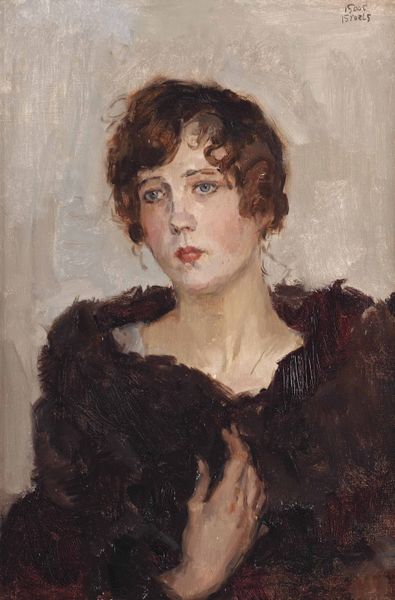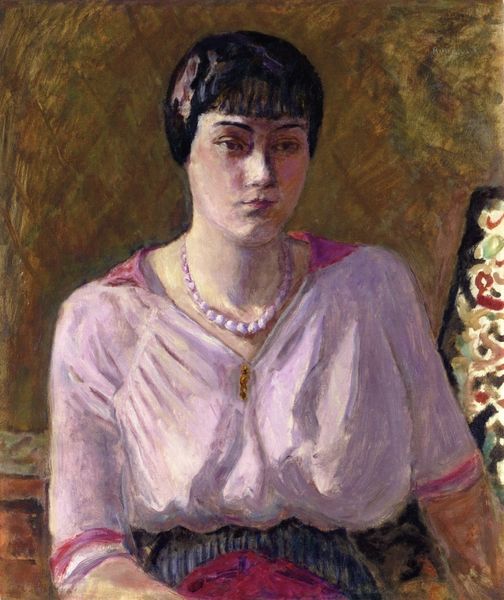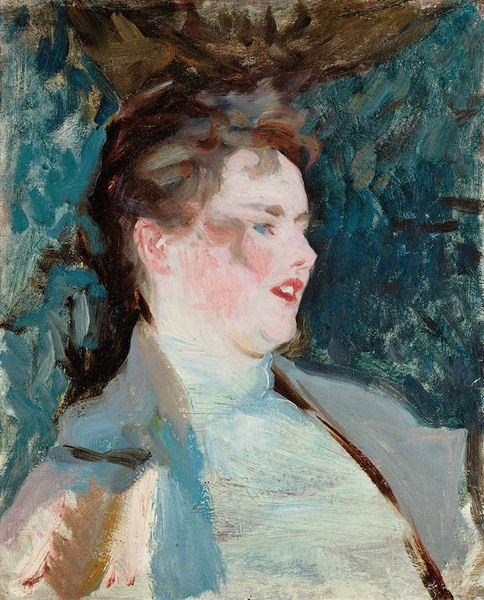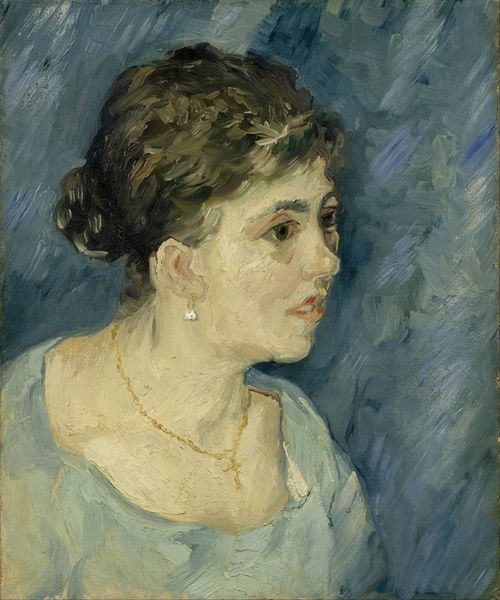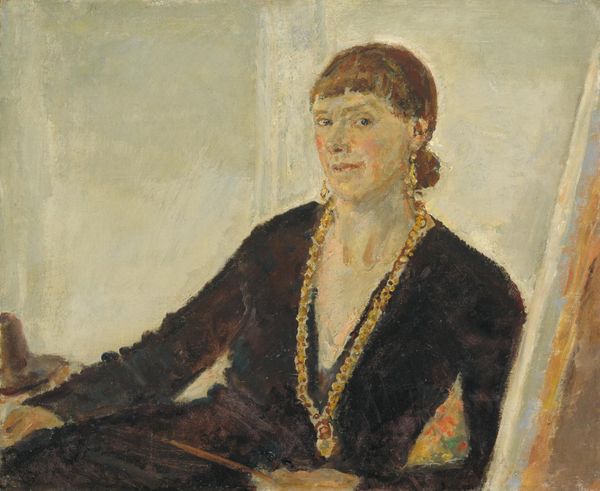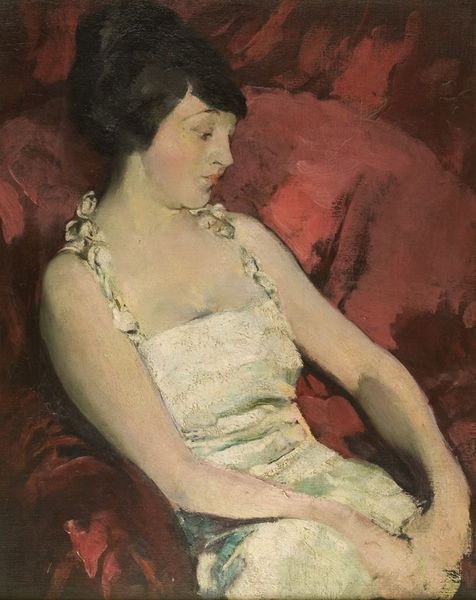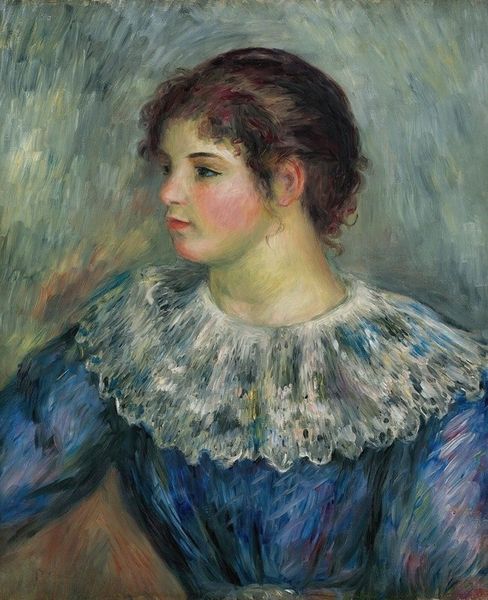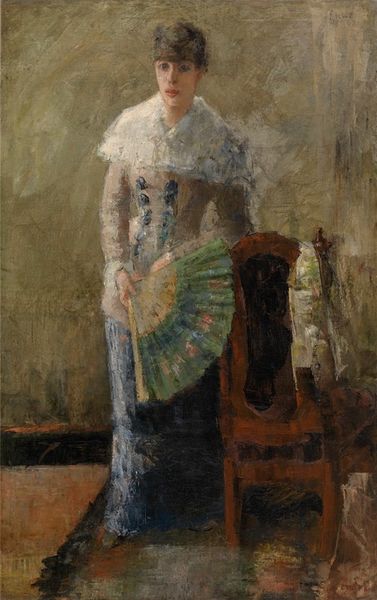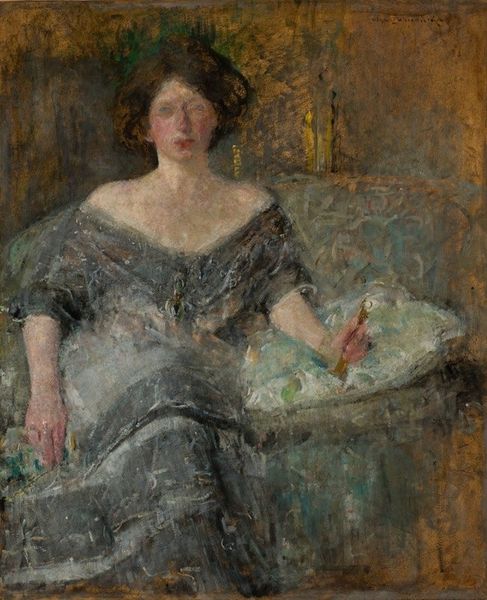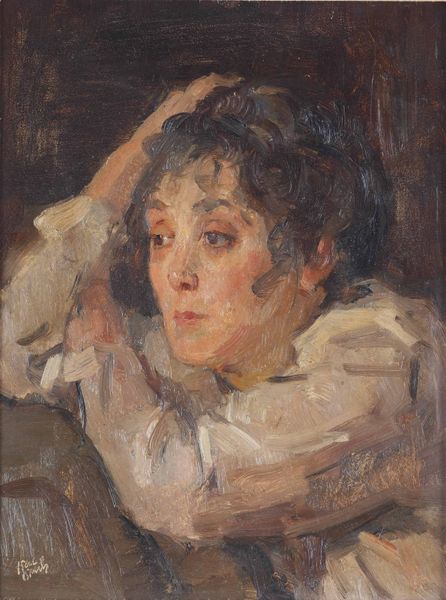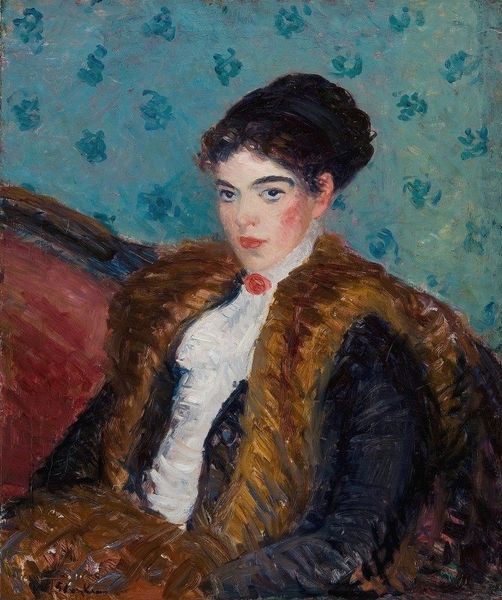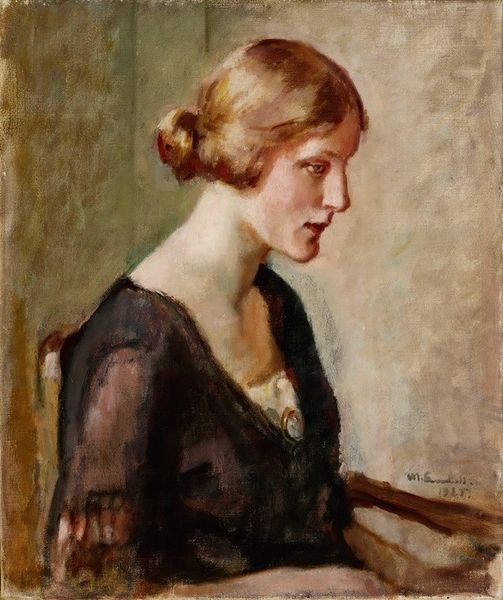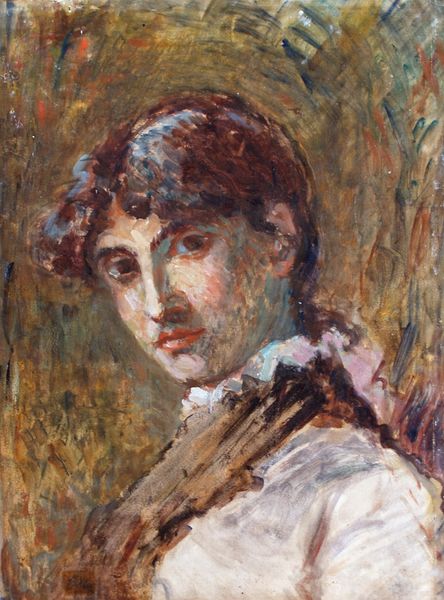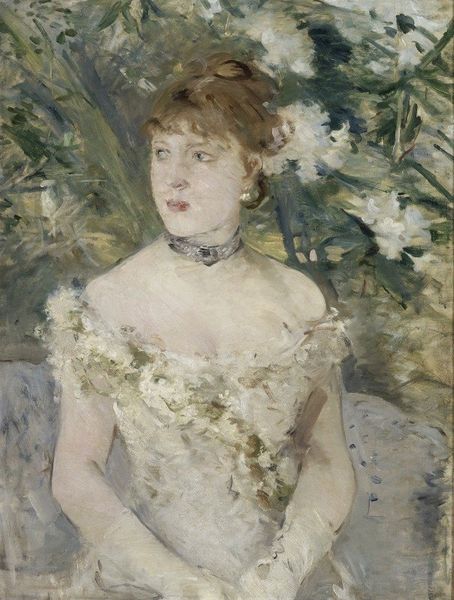
Dimensions: support: 908 x 603 mm
Copyright: © Tate | CC-BY-NC-ND 4.0 DEED, Photo: Tate
Editor: This is Claude Rogers’ portrait, Mrs Richard Chilver. It’s an oil on canvas, and there's no date, which is interesting. The woman seems very reserved, almost constrained. What do you see in this piece? Curator: I see a carefully constructed image reflecting the social constraints placed on women, particularly wives, within the domestic sphere. The muted tones and the sitter’s controlled posture speak to limited agency. Editor: Limited agency? Curator: Consider the period. What was expected of women then? What role did portraiture play in reinforcing those expectations? This painting is not just about Mrs. Chilver; it's about the societal forces shaping her identity. Editor: That gives me a lot to think about regarding the gaze and how women were seen, and wanted to be seen. Curator: Exactly. And how artists, consciously or unconsciously, participated in that visual dialogue.
Comments
tate 7 months ago
⋮
http://www.tate.org.uk/art/artworks/rogers-mrs-richard-chilver-n05345
Join the conversation
Join millions of artists and users on Artera today and experience the ultimate creative platform.
tate 7 months ago
⋮
This portrait of the journalist, Elizabeth Chilver, was produced in the year of her marriage to a senior civil servant named Richard Chilver. It is painted in the realist tradition of the Euston Road School which Claude Rogers founded with Coldstream and Pasmore in 1937. Rogers wrote that it was ‘a commission which… did not come off at the time’. His concern for accuracy is balanced by his delight in the sensuous qualities of paint. Elizabeth Chilver later became Principal of Bedford College in London and, from 1971, of Lady Margaret Hall, Oxford. Gallery label, August 2004
